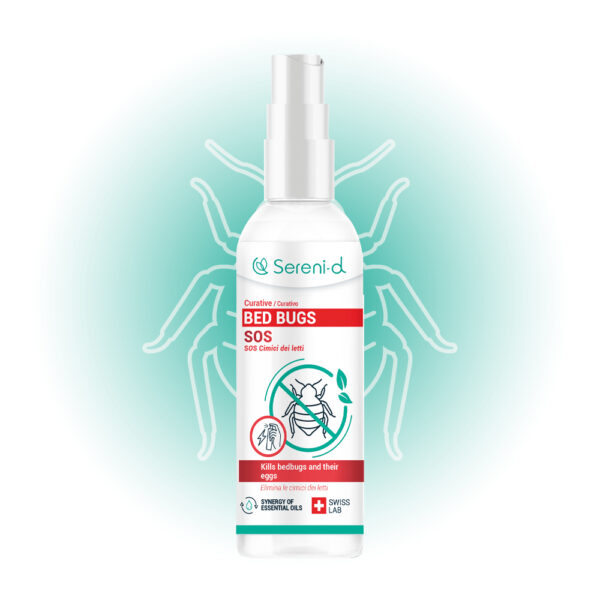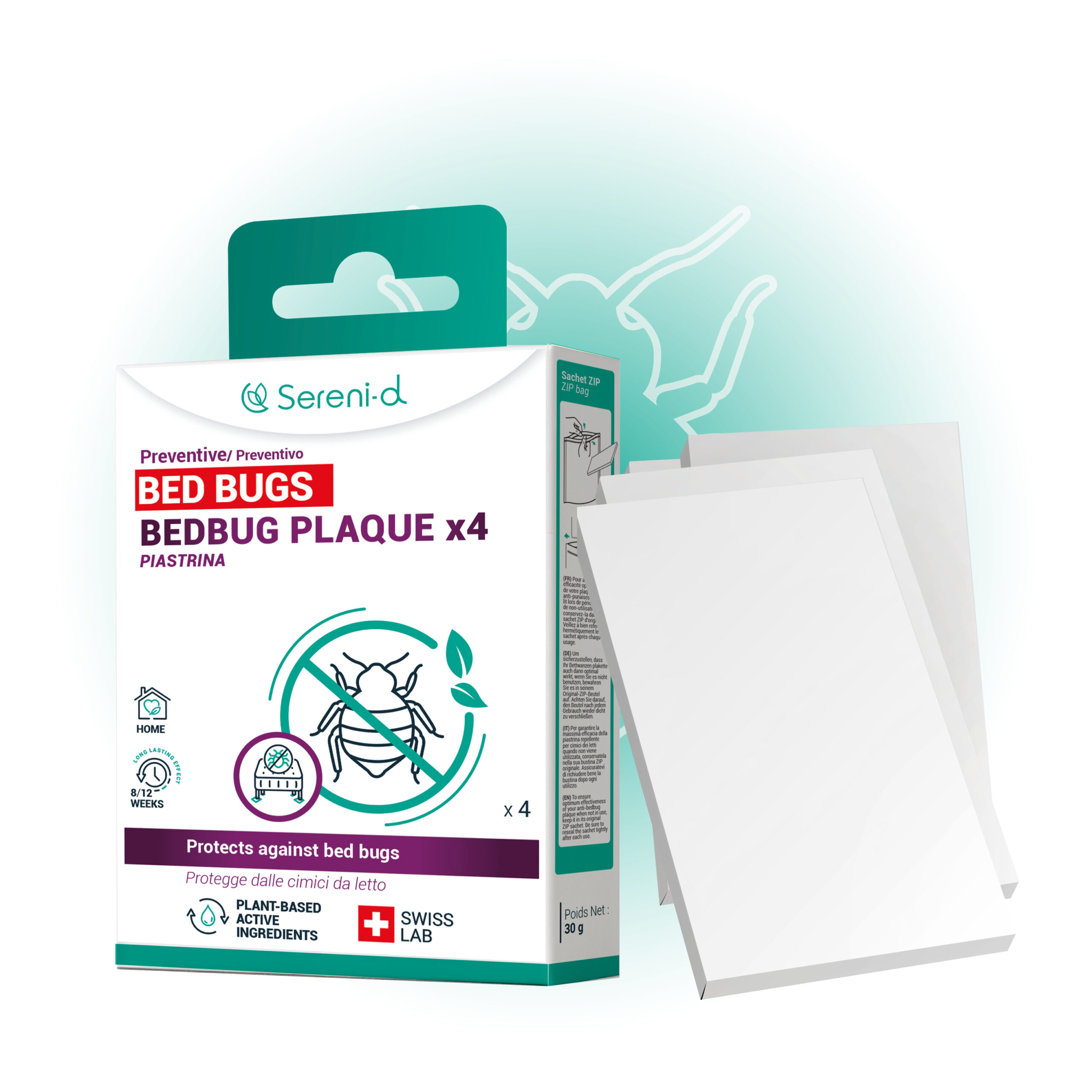University campuses are ideal breeding grounds for bed bug infestations. With students constantly coming and going, outdated facilities and limited resources for prevention, the risk of these pests taking hold is high. Closures are sometimes unavoidable, with disastrous consequences for both students and staff. Causes, risks, prevention solutions and recommended treatments: here is all the practical information you need on this subject, tailored to the university context.
In brief
➡️ University residences are particularly vulnerable to bed bugs due to the high turnover of students and often dilapidated premises.
➡️ An infestation can have serious health, psychological and organisational consequences.
➡️ Professional treatment is the most effective solution: inspection, heat or steam treatment, thorough vacuuming and regular monitoring.
➡️ Students and staff should be made aware of the correct measures to take.
Universities: places particularly vulnerable to bed bugs

A high turnover of students
University residences and campuses are constantly busy places. Every semester, new French and international students arrive, while others leave their accommodation for internships, university exchanges or to finish their studies. This constant turnover makes it easy for bed bugs to take hold. These small insects can easily be carried in students’ belongings, such as suitcases, clothing and bed linen.
The situation can quickly escalate, as a single bed bug in a room can cause an infestation throughout the entire building.
Remember that a single female bed bug can lay 5 to 15 eggs per day.
The start of the school year is a particularly risky time. With holidays and trips abroad, the chances of bringing bed bugs home with you are multiplied. This is especially true since cases of infestation increase in summer.
Dilapidated university premises
In France, one third of university premises are in poor condition (source). Some buildings, such as those at the Sorbonne Paris Nord University (Paris XIII), are downright dilapidated.
According to a report by the Court of Auditors, ‘many buildings date from the 1960s and are reaching the end of their life cycle’.
These structures are riddled with cracks in the walls, loose skirting boards, damaged floors and worn furniture. An ideal playground for bed bugs, as these insects love this type of hiding place.
These conditions are particularly problematic in collective residences, where rooms are close to each other and often share common areas. An infestation in a single room can quickly spread to an entire floor or even the entire building.
➡️ To go further: Understanding the different levels of bed bug infestation.
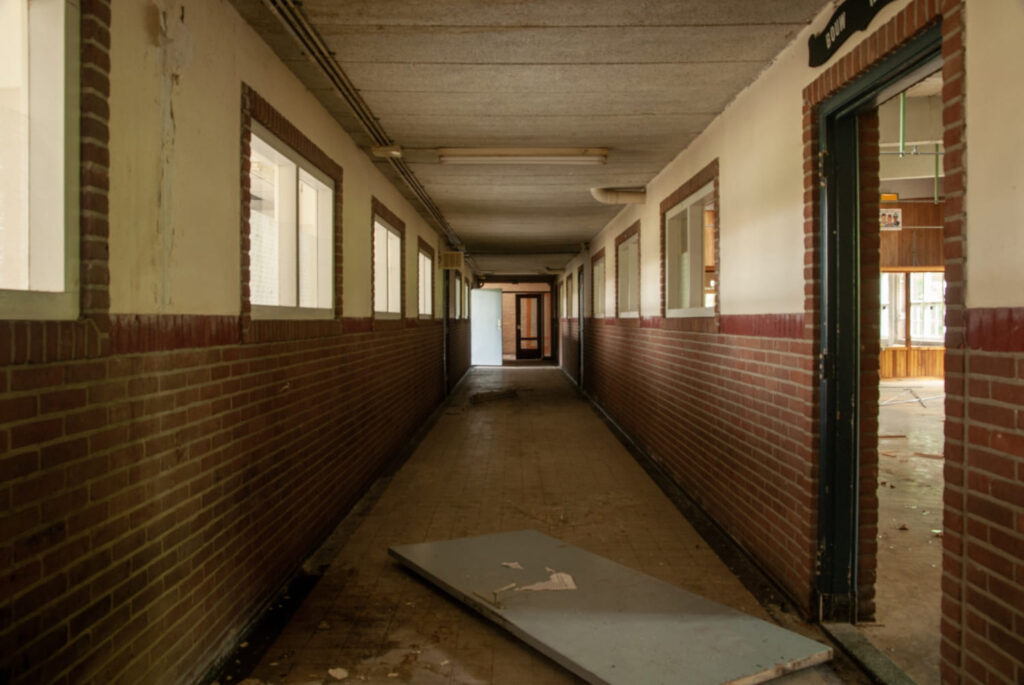
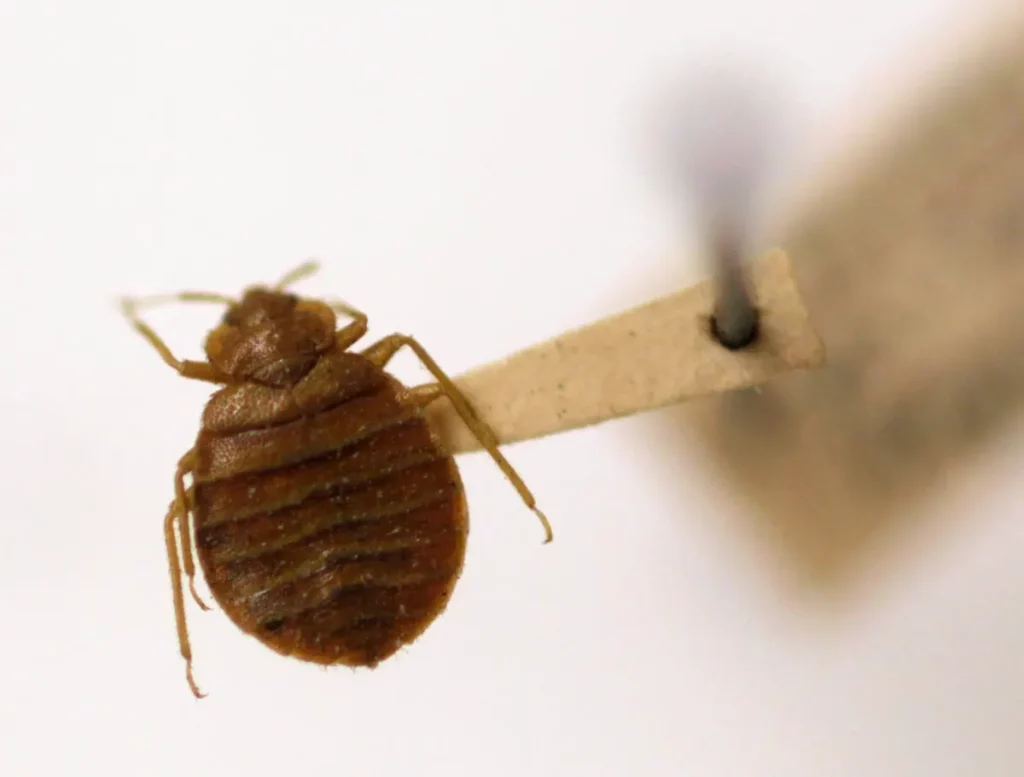
Insufficient prevention measures
The State owns 82% of university buildings (source). Unfortunately, investment is clearly insufficient.
In many university residences and faculties, the fight against bed bugs is hampered by budgetary constraints.
Landlords, CROUS (the French student housing agency) and higher education institutions have limited resources to implement effective prevention policies. Financial priorities generally focus on routine maintenance, urgent repairs and services for students receiving grants.
As a result, control measures are often taken too late, once the infestation is well established.
The lack of standardised protocols, regular inspections and staff training exacerbates the problem.
Serious consequences in the event of infestation
A bed bug infestation in a university can turn into a nightmare for both students and the institution. First and foremost, it is a health problem, with itching from bites and sleep disturbances, not to mention the psychological risks such as stress and anxiety. The academic success of students can be seriously compromised.
It is also an economic problem for the institution. Carrying out a complete treatment of the premises is very expensive. Sometimes closure is inevitable, as was the case at the law faculty in Aix-en-Provence following the report of a bed bug in a lecture theatre.
Finally, the institution’s image may be tarnished, deterring some French or international students from enrolling.
How can you recognise an infestation in a university residence?
Les signes visibles
Here are some signs that you may have bed bugs:
- Clustered or aligned bites, often on the arms, legs or back.
- Intense itching, worse at night.
- Small black marks on sheets, pillowcases or mattress covers.
- Red or brown spots that may be caused by crushed insects.
- Whitish eggs about 1 mm in size, stuck in seams or corners.
- Translucent skins left behind by young bedbugs as they grow.
Of course, reports made by students must be taken seriously and dealt with as quickly as possible by management.
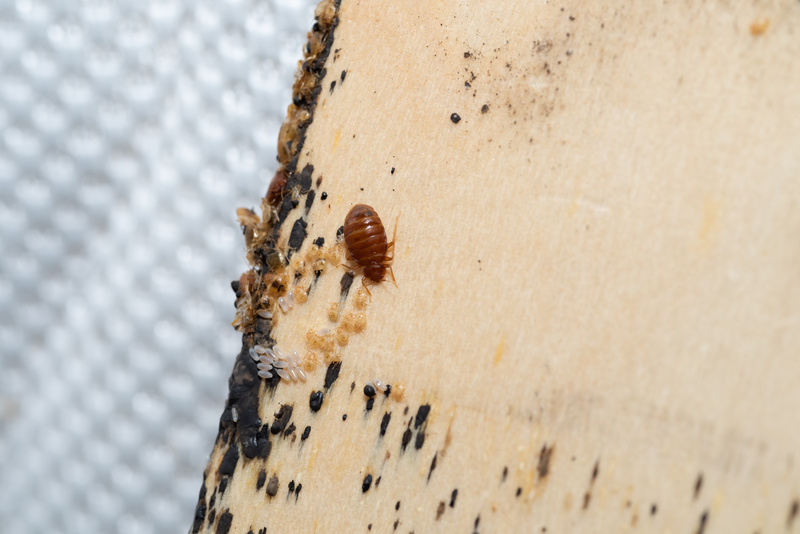
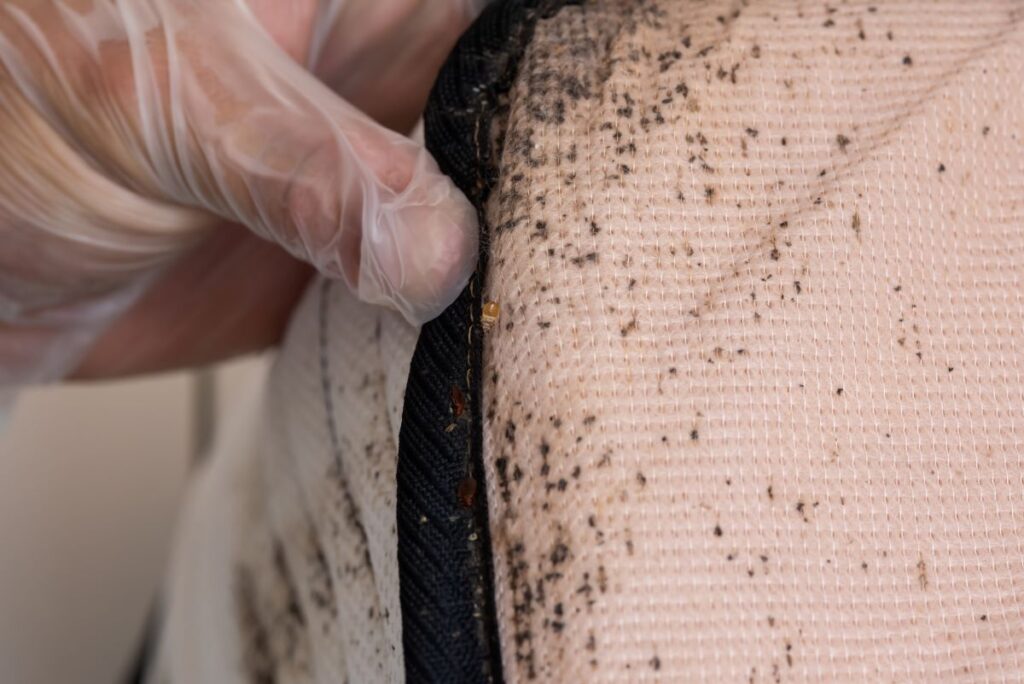
Areas to inspect first
Bed bugs hide mainly near their food source and in dark corners. Here are the places to check first:
Bedding:
- Seams and folds in the mattress.
- Slats, gaps and stapled fabric on the bed base.
- Pillows, covers and blankets.
Furniture near the bed:
- Bedside tables, drawers and shelves.
- Cracks in desks, wardrobes and chests of drawers.
Fixed structures:
- Behind skirting boards and cracks in walls.
- Under loose wallpaper.
- In electrical sockets and switches.
Personal items:
- Suitcases, backpacks and folded or stacked clothing.
- Curtains, rugs and decorative cushions.
➡️ Good to know: canine detection is the most reliable and accurate method for detecting bed bug infestations.
Treatment solutions tailored to universities
Call in a certified professional
Exorbitant prices, misleading diagnoses, use of ineffective products… Unfortunately, scams are common among service providers.
It is essential to call in a service provider with the Certibiocide label and, ideally, a specialised certification such as Certipunaise.
As a university administrator, you can consult the following two resources:
- The map of Prosane-approved professionals
- The directory of CS3D-certified companies (Chambre Syndicale Dératisation, Désinsectisation, Désinfection)
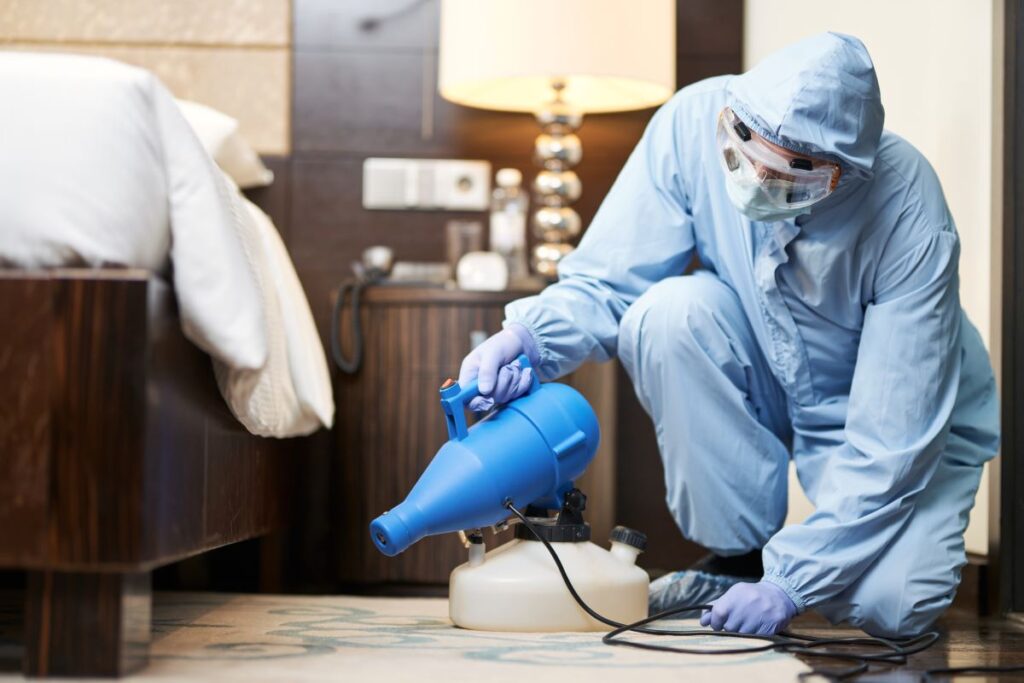
Implementation of professional treatment
A qualified professional follows a strict protocol designed to eradicate the infestation while minimising disruption to students.
| Steps | Main actions | Objective |
| 1. Assessment and mapping of infestation | Complete visual inspection, certified canine detection, identification of infestation sites. | Identify all infested areas to plan targeted and comprehensive treatment. |
| 2. Preparing the premises | Information for students and staff, isolation of items, high-temperature washing, protection of furniture. | Limit spread and allow full access to areas to be treated. |
| 3. Thermal and mechanical treatment | Dry steam at 120°C on mattresses, bed bases, skirting boards; vacuuming with HEPA filter. | Immediately destroy eggs, nymphs and adults to reduce the population. |
| 4. Targeted chemical treatment | Application of approved insecticides (shock + residual effect), drying powders in corners and outlets. | Ensure continuous action to prevent reinfestation. |
| 5. Second intervention | Repeat treatment 7 to 15 days later, check and reapply if necessary. | Eliminate bedbugs that hatch from eggs after the first treatment. |
| 6. Post-treatment prevention | Installation of anti-bedbug covers, setting of traps, staff training, and monitoring over a four-week period. | Prevent infestation from returning and react quickly if you suspect an infestation. |
What students should do
If you are a student and you find bed bugs in your room, the first thing to do is to report it to the administration as soon as possible.
While waiting for professional treatment to be carried out, here is what you can do:
☑️ Wash bedding and clothing at a high temperature of 60°C.
☑️ Tumble dry at maximum temperature for at least 30 minutes.
☑️ For delicate clothing, freeze at -20°C for at least 72 hours.
☑️ Isolate infested items in airtight bags.
☑️ Thoroughly vacuum the room with a vacuum cleaner with a narrow nozzle along the skirting boards, mattress seams and cracks. Empty the bag into an airtight bag.
☑️ Avoid carrying suitcases or bags into other rooms or common areas to prevent the spread of bed bugs.
For more information: Bed bug treatment protocol.

SOS Bed bugs
• Super-powerful curative spray for bed bugs
• Eliminates 100% of all bed bugs (eggs, larvae, adults)
• Immediate, safe, long-lasting protection
• Over 200,000 satisfied Sereni-d® customers
CONCENTRATED FORMULA – MAXIMUM RESULT
In stock
Essential prevention
When it comes to bed bugs, prevention is better than cure. An advanced infestation is very difficult to treat, especially over large areas.
Prevention is therefore essential. Student residence managers, social landlords and university housing services (CROUS, schools, faculties) must implement a proactive policy including:
Training for cleaning and maintenance staff
Some pest control professionals offer training courses to:
- Learn how to identify signs of infestation
- Know where to look first
- Respond quickly if you suspect an infestation
- Use prevention and treatment equipment correctly
The appointment of a ‘bed bug officer’ within the university can therefore prove very useful.
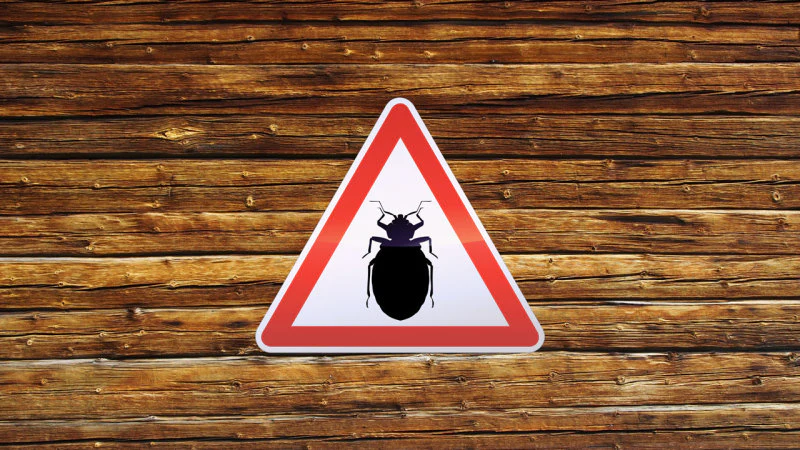

Raising awareness among students
Informing students is essential to limit the appearance and spread of bed bugs.
Here is an example of what an effective awareness campaign might include:
☑️ Posters and visual aids in halls, lifts and common areas explaining:
- How to recognise bed bugs and their eggs.
- The main signs of infestation (bites, black spots, traces of blood).
- What to do immediately if you suspect an infestation.
☑️ Information meetings at the beginning of the year:
- Presentation of the risks and consequences of an infestation.
- Advice on how to avoid bringing them back after a trip or stay away from home.
☑️ Practical guides distributed to students:
- Rules for maintaining bedding (regular washing at high temperatures).
- Use of anti-bedbug covers on mattresses and pillows.
- Importance of reporting any suspicions to the manager immediately.
☑️ Digital communication
- Emails and posts on the university’s social media accounts.
- Video tutorials on inspecting rooms and furniture.

